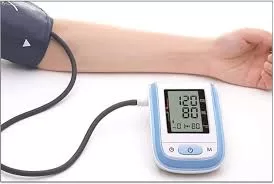A groundbreaking study published in JAMA Network Open has revealed a significant association between new-onset hypertension and the heightened risk of developing fibroids in women. Led by Susanna D. Mitro, PhD, a research scientist at the Division of Research at Kaiser Permanente Northern California, the study sheds light on the intricate interplay between cardiovascular health and gynecological conditions.
The comprehensive research analyzed data from 2570 women aged 43 to 52 years, spanning over 13 clinical visits from 1996 to 2013. None of the participants had a history of fibroids at the study’s outset. Through meticulous monitoring, researchers tracked blood pressure levels and cardiovascular biomarkers, while also recording instances of newly diagnosed fibroids and prescriptions for hypertension medications.
The findings unveiled a compelling correlation between hypertension and fibroid development. Women with untreated hypertension exhibited a 19% greater risk of receiving a fibroid diagnosis compared to those without hypertension. Conversely, those undergoing treatment for hypertension experienced a 20% lower risk of fibroid development, suggesting a potential protective effect of antihypertensive medications.
Further analysis delved into the impact of medication on fibroid risk among hypertensive women. Those actively receiving medication displayed a remarkable 37% lower risk of fibroid development compared to their untreated counterparts. Specifically, prescriptions for ACE inhibitors were associated with a striking 48% reduction in fibroid risk.
Of particular note, women experiencing new-onset hypertension faced a substantial 45% increased risk of developing fibroids compared to their normotensive counterparts, underscoring the significance of blood pressure management in preventing gynecological complications.
The implications of these findings extend beyond clinical observation, offering actionable insights for preventive healthcare strategies. “If the associations are causal, antihypertensive medication use where indicated may present an opportunity to prevent clinically apparent fibroid development at this high-risk life stage,” remarked the study authors.
Despite the study’s comprehensive approach, certain limitations merit consideration. Self-reported fibroid diagnoses may have overlooked asymptomatic cases, potentially skewing the results. Additionally, the exclusion of women with prior fibroid diagnoses may have impacted the representation of certain demographic groups, particularly Black women, who often experience fibroids earlier in life.
The research received funding from esteemed institutions including the National Institutes of Health (NIH) and the National Center for Advancing Translational Sciences, signaling its importance in advancing our understanding of the complex relationship between hypertension and fibroid development. Mitro and her team’s work underscores the critical intersection of cardiovascular health and gynecological wellness, paving the way for targeted interventions to safeguard women’s health.












